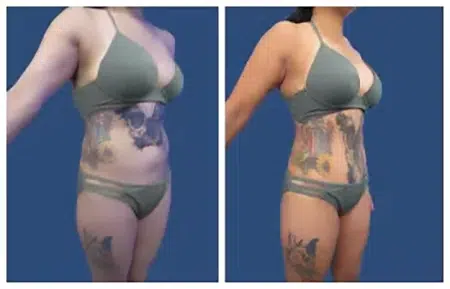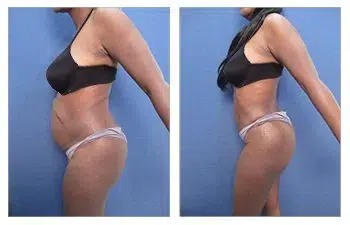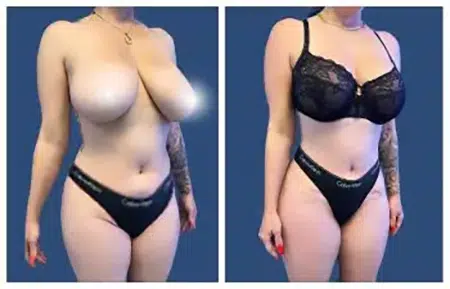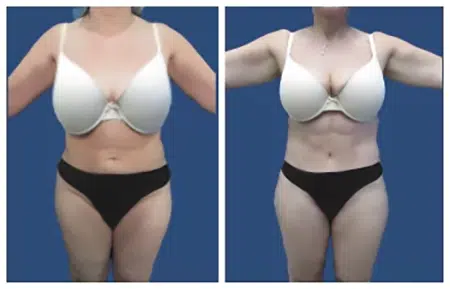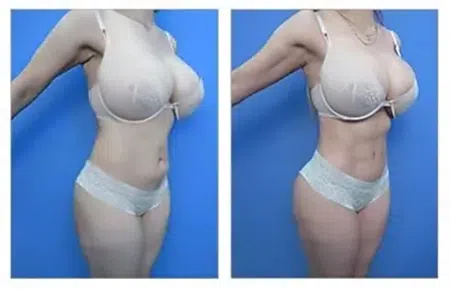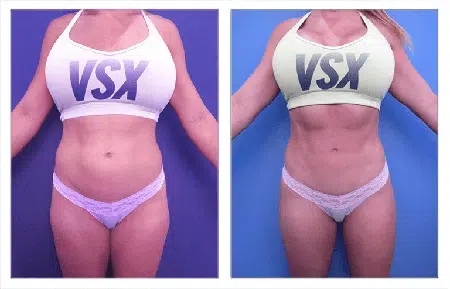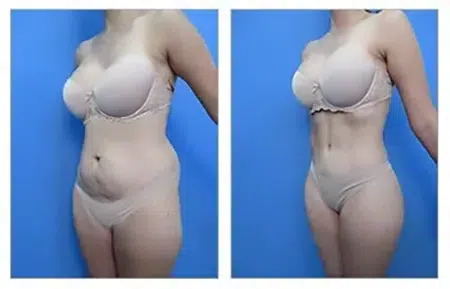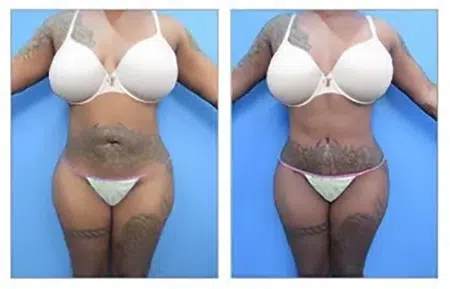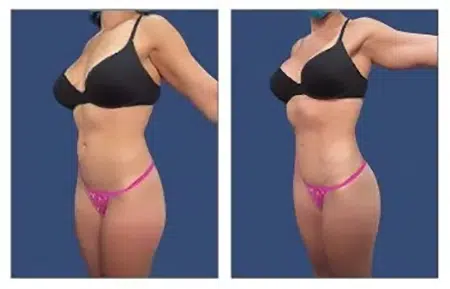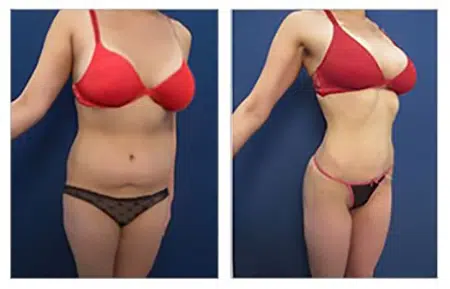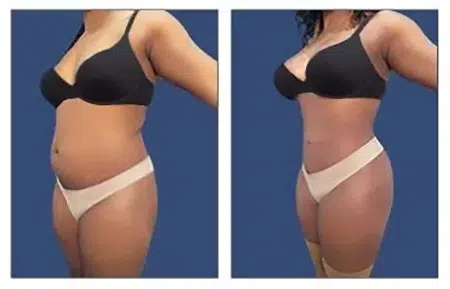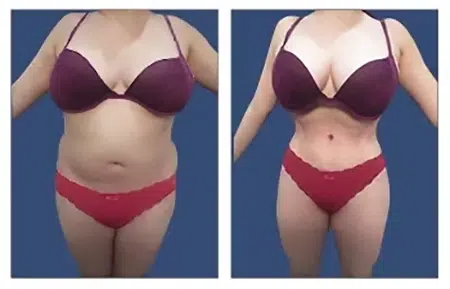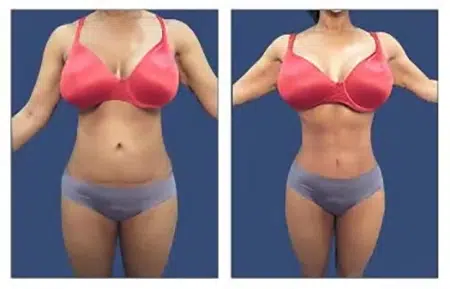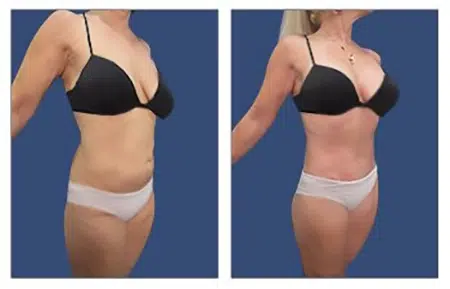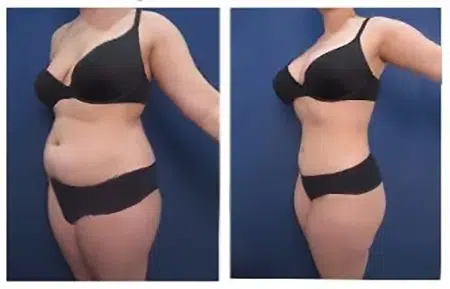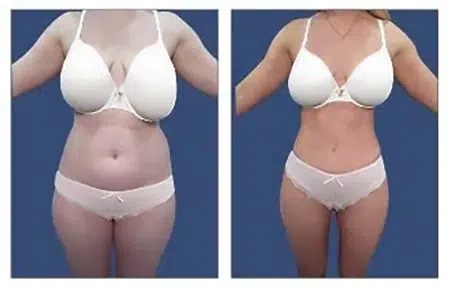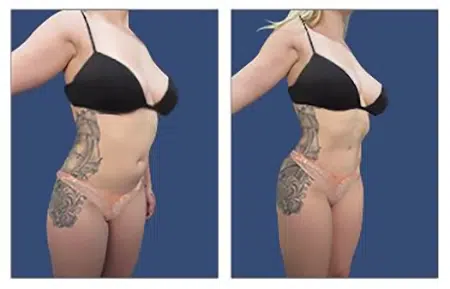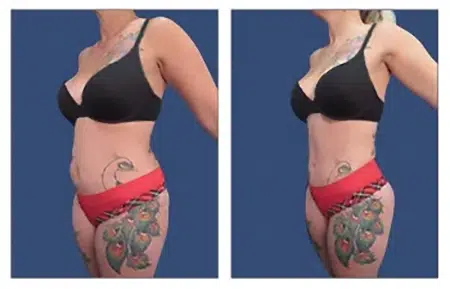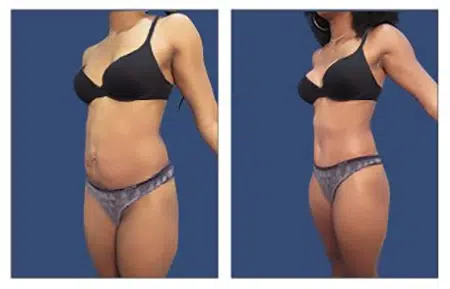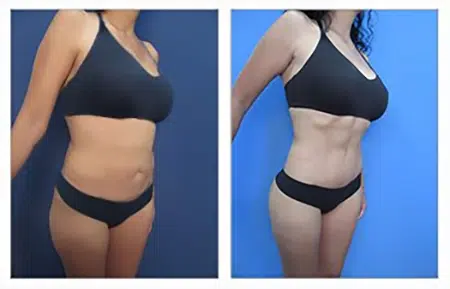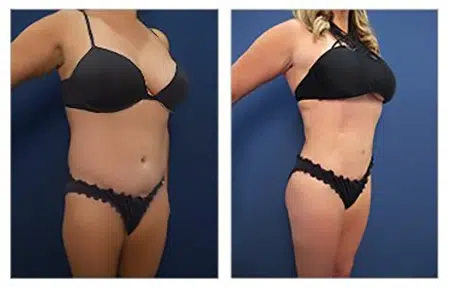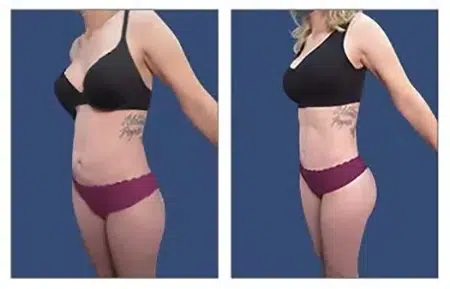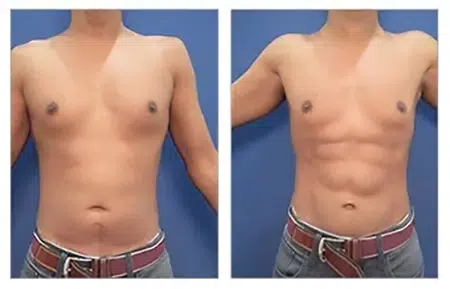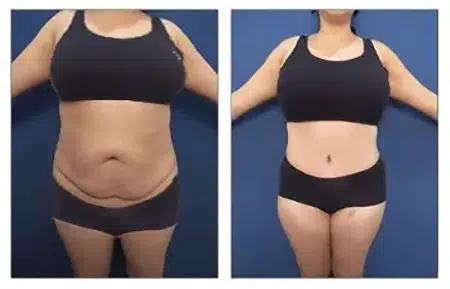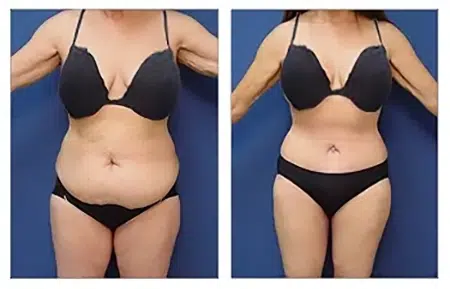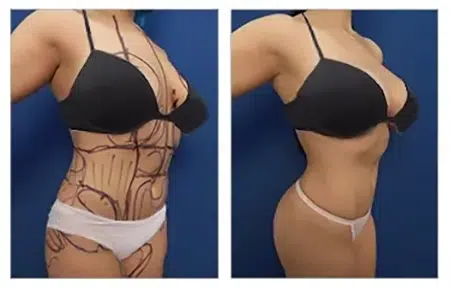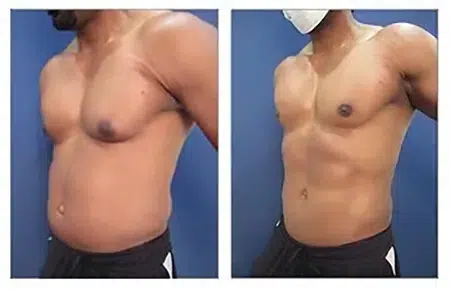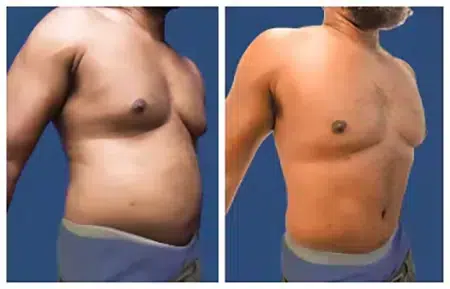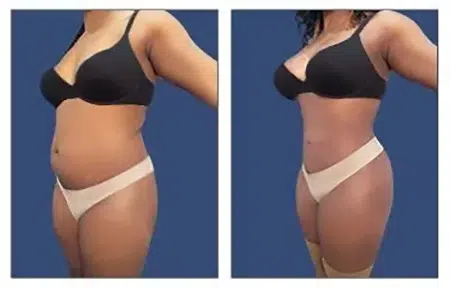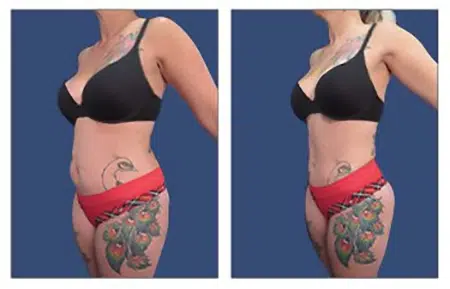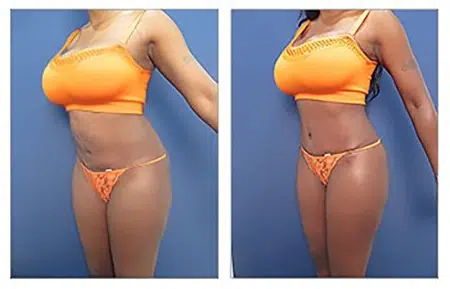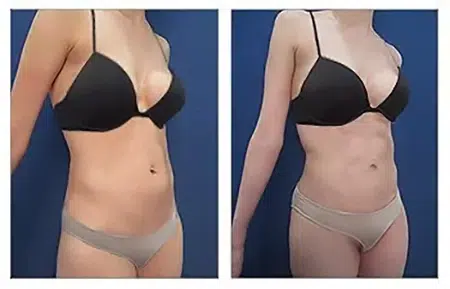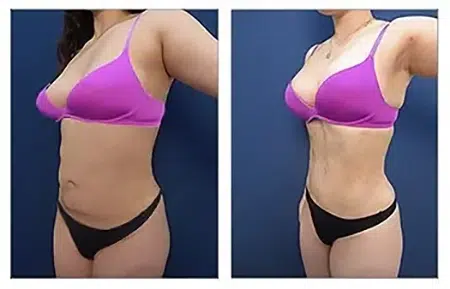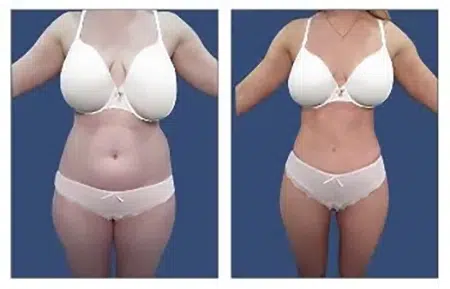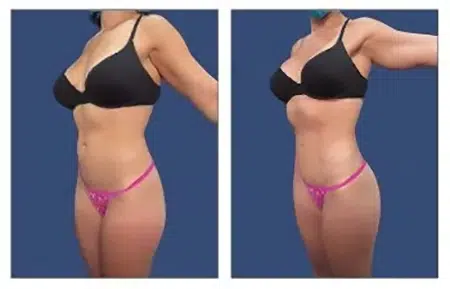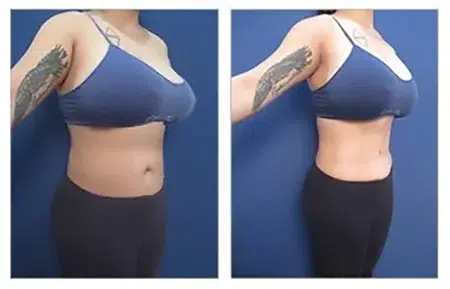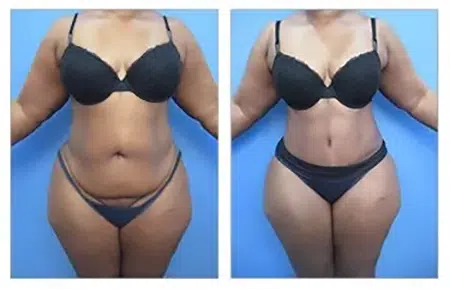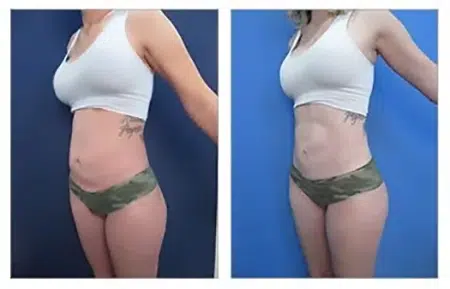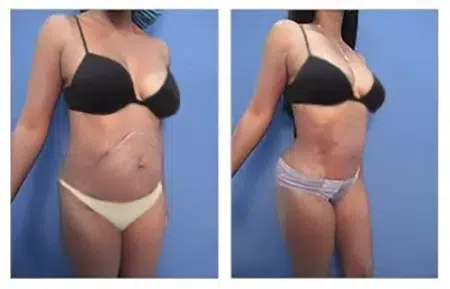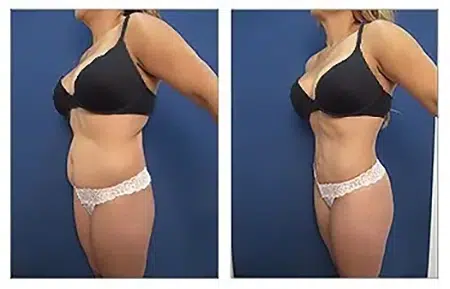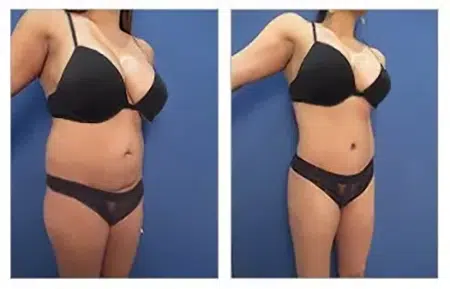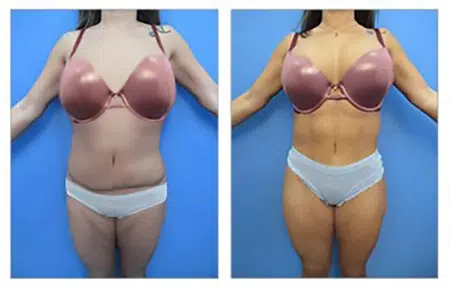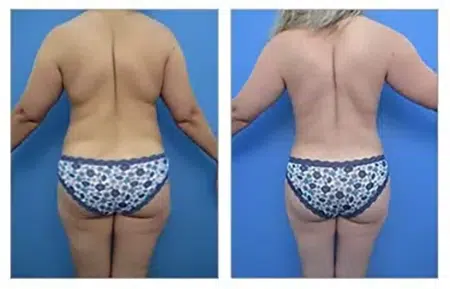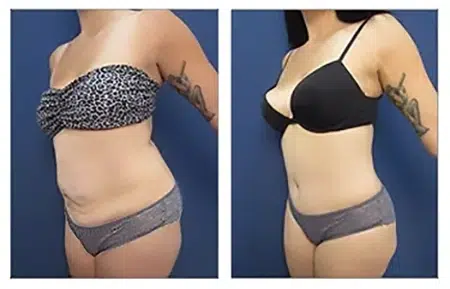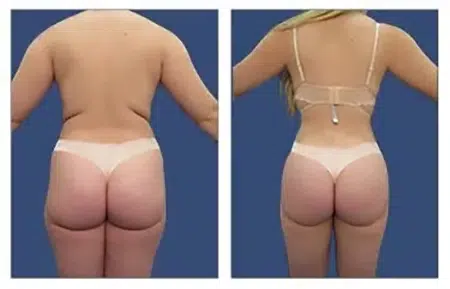Introducing: A comprehensive and step-by-step guide to liposuction Woodland Hills
The Objective of Liposuction
Liposuction primarily serves as a body contouring and sculpting procedure. Its goal is to reshape and enhance body proportions by targeting and removing stubborn fat deposits that are resistant to diet and exercise. The procedure is commonly applied to areas like the abdomen, flanks, thighs, hips, upper arms, chin, neck, back, knees, calves, and ankles. By slimming these specific areas, liposuction creates more harmonious body proportions. Importantly, it is not a method for treating obesity or a solution for weight loss, but rather a procedure designed for individuals who are near their ideal weight yet struggle with isolated or uneven fat pockets.A trip to the advancements of liposuction Woodland Hills.
The Mechanism Behind Liposuction
Liposuction involves the use of a hollow cannula (a thin tube) inserted through small skin incisions to break up and remove deep fat. This cannula is connected to a vacuum device that effectively suctions out the fat. Techniques vary, including tumescent liposuction, ultrasound-assisted (UAL), laser-assisted (LAL), and power-assisted liposuction (PAL), and are chosen based on the treatment area, fat volume, and the surgeon's preference. Depending on the scope of the procedure, patients may need general or local anesthesia with sedation. Typically, liposuction is an outpatient procedure, performed with or without anesthesia.
Suitable Candidates for Liposuction Woodland Hills
Suitable candidates for liposuction Woodland Hills are adults with good skin tone who have localized fat deposits unresponsive to diet and exercise. Candidates should be in overall good health and near their target weight. Realistic expectations about the results are essential, as liposuction effectively removes stubborn fat but is not a treatment for overall weight loss or cellulite. It may also not fully address issues of excess skin. Clear communication with the surgeon about expectations is crucial.
Post-Liposuction Recuperation in Woodland Hills
The recovery period varies, depending largely on the number of areas treated and the amount of fat removed. Smaller procedures typically lead to quicker recovery. Patients can often resume non-physical work within 2-4 days, but should avoid strenuous activities for 2-6 weeks. Common side effects include swelling, bruising, numbness, and some discomfort, which can last a few weeks. Compression garments aid in reducing swelling during recovery. Full results become apparent once all swelling has subsided, which can take up to 6 months.
Potential Hazards and Constraints
Liposuction, like any surgical procedure, carries risks such as bleeding, infection, scarring, blood clots, seroma formation, and adverse reactions to anesthesia. Improper technique may lead to contour irregularities, and there are rarer risks like nerve damage or harm to deeper structures. The procedure does not address cellulite, stretch marks, or significant skin redundancy. Furthermore, there is a risk that fat deposits could reappear or develop in new areas, particularly if there is weight gain post-surgery. It's important to remember that liposuction is not a weight loss solution and should be complemented by a healthy lifestyle with proper nutrition and exercise.
Evolution of Liposuction: Techniques and Technological Advances Liposuction Woodland Hills
Emerging as a favored choice in cosmetic surgery since the 1970s, liposuction has rapidly become a leading procedure in the realm of aesthetic enhancements, especially in metropolitan centers such as Woodland Hills. Its growing prominence is largely owed to substantial advancements in technology and the continual refinement of its methods.
These enhancements have not only increased the safety and ease of liposuction but have also significantly boosted its effectiveness in refining body contours. Presently, a diverse range of liposuction techniques, enriched by the latest in technological innovation, presents a wide spectrum of choices for those pursuing body contouring. This summary delves into the most commonly employed liposuction methods and the state-of-the-art technological progress that has transformed this area of cosmetic surgery, showcasing its continually progressive and adaptive nature.
Classic Liposuction (Suction-Assisted Technique)
The tumescent technique, a fundamental approach in liposuction, utilizes a hollow cannula and a vacuum device to effectively remove fat. Surgeons begin by making small incisions to introduce a solution that facilitates fat removal, followed by inserting the cannula to break down and suction fat. Its ongoing use is attributed to its straightforward nature, affordability, and reliable outcomes, although it's more suited for removing smaller amounts of deep-seated fat and may involve a more extended recovery.
Mechanized Liposuction (PAL)
Advancing from traditional methods, PAL incorporates cannulas with motorized tips, streamlining the fat removal process. This allows for quicker and more efficient treatment of larger areas, reducing the surgeon's physical effort. PAL is particularly adept at addressing denser, fibrous regions of the body, although recovery times are similar to traditional liposuction.
Laser-Assisted Liposuction (LAL): A Modern Approach
Laser technology in LAL aids in liquefying fat cells prior to removal. The heat generated by the laser can also trigger collagen contraction, potentially leading to skin tightening. This method is often praised for reduced blood loss, less bruising, and potentially quicker recovery, although risks like thermal burns and varying opinions among surgeons on its benefits warrant careful consideration.
Ultrasound-Assisted Liposuction (UAL) for Detailed Contouring
UAL uses ultrasound waves to mechanically break down fat, making extraction simpler and less labor-intensive. It's especially effective for dense fat areas such as the upper back and male breast tissue. VASER, a form of UAL, is notable for its ability to target superficial fat layers, essential for high-definition body sculpting. Evidence suggests that UAL's dual-layer targeting may result in better skin retraction and outcomes than traditional methods.
Water Jet-Assisted Liposuction for Gentle Extraction
Known as Body-Jet lipo, this technique uses pulsating water jets to loosen fat cells before their removal. The infused solution contains anesthetics and agents to minimize bleeding. Advocates believe this method offers smoother results, quicker recovery, and potential skin tightening advantages, particularly beneficial when removing larger fat volumes.
Innovative Technologies in Liposuction
Liposuction's evolution extends to innovative equipment that enhances surgical precision and patient safety. Recent advancements include radiofrequency devices like Renuvion and Attiva, which tighten collagen in the skin and deeper soft tissues, significantly improving skin elasticity, especially beneficial for patients with loose skin post-fat removal. These innovations, when integrated with liposuction, continually elevate the standards and outcomes of patient care.
Determining Suitable Candidates for Liposuction Woodland Hills
Weight Considerations:
Prospective patients should ideally be near their target weight. Individuals with a normal or slightly overweight Body Mass Index (BMI) are preferred candidates. Overweight significantly heightens surgical risks, and liposuction cannot address fat surrounding internal organs. Maintaining a stable weight close to the ideal is crucial for optimal aesthetic results.
Body Fat Characteristics:
Ideal candidates for liposuction are those with localized or specific areas of fat that remain unresponsive to diet and exercise. Common treatment zones are the abdomen, back, hips, thighs, flanks, knees, arms, and neck. Liposuction targets these stubborn fat deposits but is not a solution for overall weight loss. Ideal patients exhibit fat distribution that is disproportionately concentrated in certain areas compared to the rest of their body. While it benefits those with limited problem areas, liposuction also serves well for those with more widespread fatty tissues. However, it may not be suitable for individuals with excessive skin laxity, minimal fat deposits, or those who are medically unfit for surgery.
Candidate Health and Lifestyle:
As a surgical procedure, liposuction carries inherent risks such as infection, adverse reactions to anesthesia, blood clots, fluid build-up, scarring, and contour irregularities. The healthiest candidates, committed to a balanced diet and regular exercise, typically see the best long-term results. Liposuction does not prevent future weight gain; thus, maintaining a healthy lifestyle is crucial to avoid fat accumulation in treated and new areas.
Consultation Process:
A thorough individual assessment is crucial for determining liposuction candidacy. Woodland Hills surgeons evaluate factors like age, skin type, fat composition, body proportions, treatment areas, and health history during comprehensive consultations. Conditions such as diabetes, bleeding disorders, and smoking habits can affect eligibility. The surgeon and patient together determine if liposuction aligns with the patient's unique needs, goals, and body structure, ensuring satisfaction.
Liposuction Target Areas:
Liposuction can effectively treat almost any area with localized fat deposits resistant to exercise and diet. These include the torso, hips, thighs, arms, and neck, addressing subcutaneous fat layers. Specific areas such as the abdomen, waist, hips, thighs, upper arms, neck, and male chest (for gynecomastia) can exhibit significant aesthetic improvement post-liposuction.
Midsection and Waistline:
Abdominal liposuction, targeting the stomach region, is a highly sought-after procedure. Accumulated fat in the flanks, the front and sides of the waist, and the upper abdomen creates persistent bulges, distorting the body's profile. Liposuction in these areas is effective in sculpting an attractive hourglass figure for women and a more defined abdomen for men. The midsection often shows remarkable responses to fat removal, where even small reductions can significantly improve the abdominal appearance.
Hips and Outer Thighs:
Hip reduction, alongside areas like the stomach and torso, is a top request in liposuction. Targeting the "saddlebags" or the persistent fat on the outer hips and thighs, this procedure enhances feminine body contours. The process of slimming down the hips and outer thighs can result in a more defined lower body silhouette, often showing noticeable results with the removal of just 5-10 pounds of fat.
Thigh Region:
Liposuction refines the shape of the thighs by extracting fat from the inner, outer, or hamstring areas. This procedure is particularly beneficial for women, aiding in lessening thigh friction and achieving a more graceful leg shape. Men, too, benefit from a more defined muscular appearance with the reduction of thigh fat. Treating the thighs, either in specific sections or entirely, can lead to comprehensive reshaping, although post-operative compression garments are necessary for the best outcomes.
Upper Arm Area:
Upper arm fat, often resistant to exercise and weight training, is a common area of concern. Liposuction, performed with minimal incisions, effectively reduces arm fat, offering a noticeable slimming effect and enhanced muscle definition. Even the removal of a small amount of fat from the arms can lead to significant aesthetic improvements.
Chin and Neck Region:
One of the traditional applications of liposuction is in addressing excess fat in the double chin and neck area. This procedure plays a crucial role in defining facial contours and improving the neckline. Special care is required during and after the procedure in these areas to avoid irregular contours. When done correctly, liposuction can significantly enhance facial aesthetics by reducing the appearance of jowls or a double chin.
Chest Area (Gynecomastia Treatment):
In cases of gynecomastia, liposuction can be an alternative to breast reduction surgery, especially when the condition is due to excess fatty tissue rather than glandular issues. Strategic fat removal in the chest area can reshape the male chest, offering a more masculine and flatter appearance, thereby addressing issues of gynecomastia safely and effectively.
Readying Yourself for Liposuction Woodland Hills
Considering undergoing liposuction after familiarizing yourself with the initial steps? Adequate preparation and careful planning are key to ensuring an optimal surgical experience, reducing potential complications, and facilitating a quick recovery. This phase involves everything from selecting the right surgeon to fine-tuning your diet, all geared towards preparing you for a successful procedure.
Choosing a Skilled, Board-Certified Surgeon:
The foremost and crucial step in your preparation is choosing a competent surgeon specialized in cosmetic or plastic surgery. Ensure your surgeon is certified by the American Board of Plastic Surgery or the American Board of Cosmetic Surgery. Reviewing before and after pictures of cases similar to what you envision is advisable. Opt for surgeons with a track record of aesthetically appealing results for a secure and gratifying liposuction experience.
Undergoing a Pre-Surgical Evaluation:
At your initial meeting, your surgeon will conduct a thorough evaluation to assess your suitability for liposuction. This will include a review of your medical history, current medications, allergies, and any health conditions. The assessment will cover your body's fat distribution and skin quality. This consultation is also your opportunity to inquire about the specifics of the liposuction process, anesthesia choices, and the financial aspect.
Enhancing Nutrition and Physical Fitness Before Surgery:
Boosting your body’s condition through a nutritious diet and regular exercise can significantly improve your healing post-liposuction. Focusing on building lean muscle mass can enhance your body's contours after the surgery. Nutritionists can offer tailored dietary guidance, while personal trainers can help speed up your recovery through customized fitness routines.
Completing Necessary Medical Testing:
Follow your physician’s instructions to complete all required medical tests well before your surgery. This may include blood tests, EKGs, or other examinations to establish a clear health profile. Any unusual findings should be immediately communicated to your surgical team to avoid any unforeseen delays.
Pausing Certain Medications and Supplements:
It's advised to stop taking medication that can increase surgical bleeding risks, like anti-inflammatory drugs, aspirin, and certain supplements, as per your doctor’s guidelines, typically 1-2 weeks before surgery. Quitting smoking at least 6-8 weeks prior to the procedure is also highly recommended. Make sure to document when you stopped these medications to adhere to the pre-surgical instructions.
Securing Assistance for Recovery:
Anticipate the need for help with daily activities such as cooking, cleaning, and running errands during the early stages of recovery when your mobility may be limited. Whether it's professional caregivers or support from friends and family, organizing this help in advance, including care for pets if you live alone, is crucial. Having a support system in place allows you to concentrate fully on your rest and recuperation.
Securing Assistance for Recovery:
Anticipate the need for help with daily activities such as cooking, cleaning, and running errands during the early stages of recovery when your mobility may be limited. Whether it's professional caregivers or support from friends and family, organizing this help in advance, including care for pets if you live alone, is crucial. Having a support system in place allows you to concentrate fully on your rest and recuperation.
Preparing Your Living Space:
In the latter stages of your recovery, you should avoid strenuous activities like reaching for high shelves or heavy cleaning. Therefore, complete any major household chores, like laundry or grocery shopping, before your surgery. Arrange your living space so that essentials like water bottles, pillows, ice packs, and other frequently used items are within easy reach. A seamless recovery begins with proactively preparing your environment to minimize additional stressors.
Assessing Liposuction Safety and Potential Risks
Liposuction, being a highly popular cosmetic surgery, necessitates a thorough understanding of its safety and risks. While it brings significant benefits, it's important to recognize that, like any surgical procedure, liposuction comes with potential complications. Familiarity with these risks allows patients to make well-informed decisions. Generally, the incidence of complications in cosmetic surgeries, including liposuction, is quite low. However, potential injuries to skin layers or muscle linings can occur.
Infection and Hemorrhage Hazards
Post-surgical infection is a potential risk in any surgery. In liposuction, when performed by experienced surgeons in sterilized settings and coupled with antibiotic use, the likelihood of infection is minimal, typically between 1-3%. Bleeding is a common risk in any surgery, but the risk in liposuction procedures is relatively low at about 1%. The manipulation of small blood vessels during the procedure can lead to some bleeding under the skin, which is usually managed with drains and compression garments to minimize it.
Risks of Blood Clots and Fat Embolism
Blood clots are a concern in any major surgical procedure, though in liposuction, the risk remains below 1%. Quick medical response is crucial to prevent any formed clots from turning into dangerous pulmonary emboli. Preventative measures like anticoagulant therapy during recovery are employed to mitigate this risk. Similarly, the risk of fat emboli, particularly in procedures like Brazilian Butt Lifts where fat is re-injected, is present. Experienced surgeons employ meticulous techniques to minimize this risk. Continuous vigilance and prompt action are key in reducing the danger of these complications.
Anesthesia Complications
All surgeries involving anesthesia, including liposuction, carry risks such as allergic reactions or respiratory issues. The rate of such complications during liposuction is under 1%, with pre-operative testing and continuous monitoring during surgery enhancing safety. Skilled anesthesiologists play a crucial role in managing these risks, though unexpected reactions can still occur.
Irregularities in Body Contour
Post-liposuction irregularities such as dimpling, lumps, or asymmetry may occur if fat is unevenly removed. The likelihood of these issues largely depends on the surgeon's skill and the quality of surgical instruments. Experienced surgeons are typically able to prevent or minimize such irregularities, and can often correct them with additional procedures if necessary. Patient vigilance in reporting any concerns is also important.
Skin Laxity After Liposuction
After liposuction, especially in areas with significant fat removal, skin may not retract as expected, leading to sagging. Younger patients with better skin elasticity usually see better contraction of the skin. For older patients or those with large amounts of fat removed, treatments like internal radiofrequency or subsequent surgical excisions may be necessary to address skin laxity. Setting realistic expectations is crucial in these scenarios.
Post-Liposuction Care and Healing Process
Following liposuction Woodland Hills, patients can anticipate notable improvements in their body contours. Ensuring effective post-operative care is crucial for a smooth recovery and achieving the best aesthetic results. Understanding what to expect during the recovery phase is beneficial. While the initial days post-surgery can be challenging, healing begins soon after, with the final results typically becoming evident within 1 to 2 months.
Assistance During Initial Recovery
In the first 24 to 48 hours post-surgery, assistance from family or professional caregivers is essential for basic movements and personal care as the effects of anesthesia wear off. Tasks like meal preparation, caring for pets, and handling light chores will require external support. Having a dependable support system allows you to focus solely on rest and recovery.
Use of Compression Garments
Immediate and continuous use of compression garments post-surgery is essential. These garments, including gradient compression sleeves and binders, help reduce swelling and bleeding, and support the skin in adapting to its new contours. They are generally worn for the first 2 to 4 weeks following the procedure.
Medication Management
Post-operative medication typically includes antibiotics to prevent infection and pain management drugs. While over-the-counter pain relievers often suffice, prescription medication may be necessary for more intense discomfort. Topical antibiotic ointments are also used to keep incision sites clean. Gradual reduction of medication use is advised as part of the recovery monitoring.
Care of Surgical Incisions
The small incisions made for the cannula insertion are usually closed with sutures and sealed with surgical glue and Steri-Strips. Keeping these sites clean using prescribed cleansers is important, and any signs of bleeding or adverse skin reactions should be reported to your surgeon immediately.
Monitoring Drainage Sites
In cases where large amounts of fat are removed, temporary surgical drains may be used to remove excess fluids. Monitoring the amount and quality of the drainage is important for determining when to remove the drains. Premature removal can lead to fluid buildup, so drains are typically kept in place for 5 to 7 days post-surgery.
Swelling Management
Despite the use of compression garments, swelling is a common aftermath of liposuction. The application of ice is not recommended due to the risk of skin damage, especially in areas with reduced sensation post-surgery. Wearing compression garments for at least the first 4 weeks is advised, and lymphatic massages can be beneficial in managing swelling.
Dietary Adjustments
A balanced diet rich in protein and low in carbohydrates and sugars is recommended to facilitate healing. Staying well-hydrated is also important. Dieticians can provide personalized nutrition plans to support recovery. However, certain supplements like fish oil should be avoided as they can thin the blood and prolong swelling.
Activity and Exercise Post-Surgery
Patients are advised to avoid strenuous activities and exercise for 4 to 6 weeks post-surgery to allow complete healing. Light activities, however, are encouraged to promote blood circulation and reduce clot risks. The timeline for resuming full physical activities varies depending on the extent of the surgery and individual healing processes.
Anticipating Outcomes and Setting Realistic Goals for Liposuction
Liposuction, a highly sought-after cosmetic procedure with over 300,000 operations conducted yearly in the U.S., offers significant improvements in body aesthetics. However, having an understanding of what realistically can be achieved is essential for patient satisfaction. Recognizing the potential and constraints of liposuction aids individuals in evaluating its suitability for their body goals.
Targeting Specific Fat Areas
Liposuction is highly effective in eliminating localized or scattered fat that resists exercise and diet efforts, thereby enhancing body symmetry. It is commonly used to address stubborn fat in areas like the stomach, back, hips, thighs, knees, neck, and arms. It can also address random fat deposits across the body. For those seeking comprehensive body contouring, a 360-degree liposuction procedure is often chosen. This method aims to rectify uneven body shapes and smooth out irregular contours. Ideal candidates for liposuction are those aiming for more refined body lines in specific areas and typically achieve gratifying results.
Enhancing Overall Body Balance
Liposuction can transform specific body regions, leading to a more balanced and proportional appearance. Trimming a protruding abdomen can harmonize with the waistline. Sculpting the hips can reduce their breadth, and neck liposuction can bring balance to facial features. This newfound symmetry often aligns with historical beauty standards, thereby boosting self-esteem.
Impact on Skin Surface
Liposuction primarily addresses the fat layer under the skin, hence changes to the skin surface are minimal. It does not significantly improve skin elasticity, and skin laxity might even increase after fat removal. To mitigate this, internal radiofrequency treatments are often used to tighten the skin and soft tissues. In cases of significant skin redundancy, additional skin removal surgeries may be necessary, and these procedures are adapted to accommodate concurrent liposuction. For instance, abdominal skin resection can be modified to allow for both skin removal and liposuction in patients with considerable skin laxity.
Liposuction and Cellulite Treatment Approaches
Treating cellulite effectively involves more than just liposuction due to its complex nature, which includes uneven fat distribution and fibrous banding. A comprehensive approach involves redistributing fat via liposuction, tightening loose fibers with internal radiofrequency devices, and cutting tethering fibrous bands (subcision). This tri-modality therapy is considered the gold standard for addressing cellulite challenges.
The Forefront of Liposuction: VASER Ultrasound-Assisted Advancements
Over the past five decades, liposuction has continually evolved, with innovations like VASER liposuction leading the charge in the field's advancements. As a state-of-the-art "fourth-generation" ultrasound-assisted body sculpting technique, VASER has been instrumental in refining the accuracy of fat removal, reducing surgical trauma, and hastening patient recovery. Let’s delve into what sets VASER apart in the realm of body contouring.
Key Benefits of VASER
VASER’s use of specific ultrasound frequencies and its fluid management system allow for a selective approach to fat removal, safeguarding adjacent skin and tissues. This selective nature and the smoother movement of its cannulas ensure better protection of vital structures, leading to more even and refined body shaping.
Enhanced Tissue Preservation
VASER utilizes gentle ultrasound vibrations to loosen fat cells, contrasting with the more aggressive mechanical disruption of traditional liposuction. This method results in less trauma to blood vessels and surrounding tissues, facilitating quicker and safer healing.
Minimized Discomfort and Swelling
Patients undergoing VASER liposuction typically report less pain, bruising, and swelling compared to traditional methods. This is due to the precision of the ultrasound targeting and gentler tissue manipulation, often allowing procedures to be performed with less reliance on general anesthesia.
Minimized Discomfort and Swelling
Patients undergoing VASER liposuction typically report less pain, bruising, and swelling compared to traditional methods. This is due to the precision of the ultrasound targeting and gentler tissue manipulation, often allowing procedures to be performed with less reliance on general anesthesia.
Superior Skin Contraction
VASER liposuction’s ability to preserve blood vessels and collagen structures within the skin results in improved skin retraction following fat removal. This is particularly evident in its ability to remove superficial fat layers effectively, leading to tighter skin adherence to the underlying structures and more defined body contours.
Accelerated Recovery Times
With the reduced surgical trauma associated with VASER liposuction, patients often experience quicker recoveries, typically ranging from a few days to a week, depending on the extent of the procedure. This faster return to normal activities is a significant advantage over traditional liposuction methods.
In summary, VASER liposuction represents a leap forward in the safety and efficacy of body contouring. It focuses exclusively on fat cell disruption and removal, while preserving surrounding tissues, to achieve outstanding body sculpting results that are increasingly in demand.
Tailoring Liposuction for Men in Woodland Hills
n the realm of cosmetic surgery, liposuction is a top choice for both men and women, with a notable 25% of these procedures annually performed on male clients. The objectives and areas of focus for men, however, often vary significantly from their female counterparts
Targeting the Neck and Chin in Men
Contrary to the common female preference for addressing thighs, hips, and abdomen, men frequently opt for liposuction to eliminate excess fat in the neck area. This procedure effectively reveals a more defined jawline, enhancing the masculine facial structure by removing small fat deposits.
Eliminating Love Handles in Men
While many women seek liposuction to enhance curves, men generally pursue a more streamlined torso, free from the protruding love handles that can detract from a masculine silhouette. Targeted liposuction in this area reshapes the flanks, leading to a more defined torso and improved fit of clothing.
Emphasizing Masculine Features
Men utilize liposuction to accentuate certain physical traits, such as a flat, prominent chest and visible abdominal muscles, diverging from the typical female goals of highlighting slender legs or defined collarbones.
costs and financing
When considering liposuction Woodland Hills, understanding the costs and financing alternatives is crucial, especially since these procedures are not covered by standard insurance plans.
Factors Influencing Cost
The price of liposuction varies based on several factors: the scope of the procedure, the surgeon’s expertise, anesthesia requirements, geographical location, and the operational costs of the surgical facility. Smaller procedures under local anesthesia may start at approximately $2,000, while extensive treatments in high-end clinics could cost up to $15,000. High-definition liposuction with comprehensive body contouring may escalate to around $25,000.
Breakdown of Expenses
The overall cost encompasses surgical, anesthesia, and facility fees, along with post-operative necessities like lymphatic massages and compression garments. Facility expenses cover the use of operating and recovery rooms, medical equipment, and nursing care
Influence of Liposuction Techniques
The choice of liposuction technique affects the cost. Traditional suction-assisted liposuction (SAL) is more economical, while advanced methods like laser-assisted (LAL), ultrasound-assisted (UAL), and radiofrequency-assisted liposuction (RFAL) involve higher expenses due to sophisticated equipment and disposable supplies.
Considerations for Revisions and Additional Procedures
While most liposuction procedures yield satisfactory outcomes, occasional revisions may be required for fine-tuning results. Combining liposuction with other surgeries like thigh lifts or breast augmentation in a subsequent session can further enhance overall body aesthetics.
Payment and Financing Plans
Many clinics offer flexible payment plans to alleviate the financial commitment of liposuction. These plans can extend over periods of 6 to 24 months, often with minimal or no interest for eligible clients. It’s advisable to explore various financing options available through the clinic to find a suitable plan that aligns with your financial situation.
Certification and Liposuction Expertise
Ensure your surgeon is board-certified by renowned bodies like the American Board of Plastic Surgery or the American Board of Cosmetic Surgery. This certification indicates extensive training in the field. Prioritize surgeons who frequently perform liposuction, as they will be well-versed in the latest techniques and approaches for body sculpting.
Commitment to Patient Safety and Quality Facilities
Patient safety is paramount. Investigate the surgeon’s history regarding complication rates and patient satisfaction. The facility where your liposuction will be performed should be fully accredited, indicating adherence to rigorous safety standards, especially if anesthesia is involved. The surgeon should also have admitting privileges at a nearby hospital.
Artistic Perspective and Results
Liposuction requires an artistic eye for detail. Scrutinize the surgeon’s portfolio of before and after photos to gauge their aesthetic sense. Look for consistency in their work, natural-looking results, and attention to body symmetry. A surgeon’s ability to deliver realistic, proportionate results is key.
Selecting an Expert Surgeon for Liposuction
Finding the ideal surgeon for liposuction is a critical aspect of your cosmetic journey. This delicate procedure not only demands technical prowess but also an artist’s touch for balanced and aesthetically pleasing results. Here’s what to consider in your search for the perfect liposuction surgeon:
Team Dynamics and Office Atmosphere
Observe the interaction between the surgeon and their staff. A harmonious and professional team often reflects the quality of care you can expect. The staff’s demeanor, knowledge, and responsiveness are indicators of the overall patient experience you will receive.
Convenient Location and Accommodations
Consider the geographic proximity of the surgeon’s practice, especially if you’re traveling from afar. Proximity is important for ease of attending consultations, surgery, and follow-up appointments. If you’re traveling, ensure you have suitable accommodations and support, particularly if anesthesia or pain management is involved.
Surgeon’s Availability and Follow-Up Care
Choose a surgeon who is accessible and committed to your care throughout the entire process, from pre-surgery consultations to post-operative follow-ups. Their availability for addressing any concerns or questions is crucial for a seamless experience.
Transparent Costs and Financial Options
Understand the complete cost breakdown of the liposuction procedure, including all associated fees. Many surgeons offer financing options to help manage the expense. However, base your decision on the surgeon’s expertise and safety record, rather than cost alone.
Selecting the right surgeon for liposuction is a decision that encompasses various factors, including expertise, safety record, aesthetic judgement, and patient care. Take your time to research and consult with potential surgeons
Gleaning Insights from Liposuction Patients in Woodland Hills
As you consider liposuction, delving into patient stories and testimonials can be incredibly insightful. These firsthand accounts provide a realistic picture of what to expect, from the physical results to the emotional journey. They offer a more personal perspective beyond clinical before-and-after photos, sharing the triumphs and challenges experienced by real people.
Liposuction, a highly sought-after procedure, garners numerous narratives from those who've undergone the surgery. Browsing through these stories on various platforms, you can discover a range of experiences that extend beyond the confines of a surgeon’s practice. Authentic testimonials provide a balanced view, highlighting both the successful outcomes and the potential setbacks.
Common Themes in Liposuction Stories
Many who have had liposuction talk about transformative body changes, renewed self-esteem, and a straightforward recovery process. Yet, the experiences can differ significantly based on several factors:
The scope of the procedure: from extensive full-body contouring to specific targeted areas.
- The method used: traditional liposuction vs. advanced techniques like VASER.
- The surgeon's expertise: comparing experiences with board-certified plastic surgeons and less specialized practitioners.
- Personal factors: such as the amount of fat removed, skin elasticity, and individual healing rates.
Positive Outcomes
Many testimonials express satisfaction with the natural-looking enhancements and the balance they bring to the body's contours. Stories of easy recoveries can reassure those feeling apprehensive about the process.
Challenges and Cautions
Conversely, some narratives highlight the importance of having realistic expectations. Disappointments often revolve around persistent issues like cellulite or residual skin laxity. Additionally, the initial recovery period can be more challenging than anticipated, particularly for those undergoing extensive procedures.
There are also cautionary tales of procedures gone wrong with unqualified practitioners, resulting in uneven or unsatisfactory outcomes. These stories underscore the importance of selecting a skilled and experienced surgeon. Moreover, some patients reflect on the necessity of maintaining their results through a healthy lifestyle, emphasizing the role of regular exercise and balanced nutrition post-surgery.
Deeper Insights from Patient Experiences
Beyond the surface-level positives and negatives, patient stories offer valuable lessons:
- The impressive transformations often showcased online typically require advanced liposuction techniques.
- The full extent of contouring and skin tightening may take up to a year to fully materialize.
- Post-operative symptoms like swelling and bruising can persist for weeks, affecting daily activities.
- Some patients may need minor revisions to address asymmetries after initial healing.
- Long-term results hinge on maintaining a stable weight and avoiding disproportionate fat distribution.
Advice from Those Who’ve Been There
Real-life liposuction patients often advise those considering the procedure to:
- Reflect deeply on personal objectives and the realities of one’s body.
- Conduct thorough research on the surgeon’s qualifications, experience, and track record.
- Be prepared for a recovery that unfolds over months, with various highs and lows.
- Invest in quality post-operative care, including compression garments and lymphatic massages.
- Commit to a healthy lifestyle post-procedure to sustain the enhancements.
In essence, these narratives paint a comprehensive picture of the liposuction journey, affirming that with the right surgeon, adequate preparation, and a grounded perspective, liposuction can significantly boost confidence and quality of life.
MISCONCEPTION about LIPOSUCTION
MISCONCEPTION: Liposuction Erases Cellulite Completely
FACT: Liposuction targets subcutaneous fat but doesn't rectify cellulite, which stems from distinct skin tethering by connective tissue bands. Effective cellulite treatment involves a comprehensive approach, such as Tri-modality therapy, which combines radiofrequency tightening, subcision of tight bands, and fat redistribution to address the underlying cause of the dimpled texture.
MISCONCEPTION: Liposuction Permanently Removes All Fat
FACT: Liposuction, including advanced methods like VASER, removes a significant portion of fat cells (50-80%) from targeted areas. However, the remaining fat cells can enlarge with weight gain. Think of liposuction as reducing the overall fat cell count; maintaining results still necessitates a healthy lifestyle.
MISCONCEPTION: Liposuction Lacks Safety
FACT: Performed by a certified, experienced surgeon in an accredited facility, liposuction is as safe as less invasive alternatives. The safety and success heavily depend on the surgeon's expertise and the technology used.
MISCONCEPTION: Fat Redistribution to Untreated Areas After Liposuction
FACT: Liposuction removes fat cells permanently from treated areas, but it doesn't prevent fat gain in untreated areas. Post-liposuction, weight gain can lead to more noticeable fat accumulation in areas not previously sculpted.
MISCONCEPTION: Liposuction is Suitable for Every Body Part
FACT: While versatile, liposuction has limitations. Certain areas, known as zones of adherence due to their dense connective tissue, are not ideal for liposuction due to potential skin retraction and distortion.
MISCONCEPTION: Fat Cells are Forever Gone Post-Lipo
FACT: While liposuction removes a substantial fraction of fat cells in a treated area, the remaining cells can still expand with weight gain. It's a misconception that liposuction grants immunity against future weight fluctuations impacting body contours.
MISCONCEPTION: Uniform Efficacy Across All Body Areas
FACT: Liposuction's effectiveness varies based on anatomical factors, fat density, and skin characteristics. Tougher fat in areas like the back may be more challenging to remove than softer abdominal fat, and areas with skin laxity require careful consideration.
MISCONCEPTION: Universal Suitability for Liposuction
FACT: Ideal liposuction candidates possess good skin tone, localized fat deposits, are close to their target weight, and maintain overall good health. Advances in techniques and patient evaluation protocols have expanded the suitability of liposuction to a wider range of individuals, including those with varying degrees of skin laxity.
These clarifications help bust common myths and provide a more nuanced understanding for those considering liposuction, emphasizing the importance of individual assessment and realistic expectations.
Sustaining Weight Post-Liposuction for Long-Term Results
Liposuction effectively reduces fat cells in targeted areas, but it's a misconception that it grants immunity from future weight gain. Grasping the limits of liposuction is vital for preserving your results over time.
The Importance of Weight Stability
Post-liposuction, the remaining fat cells can enlarge with weight gain, altering the body's new contours. Particularly, areas not treated with liposuction may exhibit more noticeable fat accumulation due to their higher fat cell density. This highlights the value of considering comprehensive body contouring, like 360-degree liposuction, to address potential problem areas uniformly.
weight loss post-liposuction
Significant weight loss post-liposuction can also be problematic, potentially leading to loose, saggy skin. Thus, it's crucial to undergo liposuction at a weight you're comfortable maintaining long-term – a concept referred to as "comfort weight." By keeping a stable weight post-surgery, you help ensure the longevity of the sculpted results.
Lifestyle Keys for Long-Term Success
Post-liposuction lifestyle choices play a significant role in maintaining results:
- Adherence to Balanced Nutrition: A nutritious diet prevents excessive weight gain and maintains the sculpted body shape.
- Regular Physical Activity: Consistent exercise not only prevents weight gain but also enhances muscle tone, important as metabolism changes with age.
- Maintaining a Stable "Comfort Weight": Staying close to your pre-lipo weight helps to preserve the surgical results.
- Considering Additional Treatments: For any future disproportion or fat accumulation, touch-up procedures can refine contours. Aging may also necessitate skin tightening surgeries.
Conclusion: Liposuction Results
Liposuction is not a substitute for a healthy lifestyle. Diet and exercise remain crucial in preventing weight gain that could alter your newly sculpted physique. While liposuction removes a significant portion of fat cells, the remaining cells can expand, especially with considerable weight changes. A committed approach to a balanced lifestyle ensures the durability of liposuction results.
The Transformative Journey: Liposuction Before and After Gallery in Woodland Hills
For those considering liposuction, before and after galleries serve as an essential visual guide, illustrating the potential transformations. These galleries should offer comprehensive views from multiple angles, providing a clear picture of the changes achieved.
Visualizing Potential Results
Authentic patient photos in a surgeon's gallery offer realistic evidence of their expertise, far more convincing than generic images. Seeing actual patient transformations – particularly in areas that mirror your concerns – provides a more profound understanding of what liposuction can achieve.
Diverse Representations and Honest Portrayals
A trustworthy surgeon’s gallery will not just showcase their best work but a wide array of results. Look for diversity in body types, extents of enhancement, and patient backgrounds. This inclusivity indicates a comprehensive approach to patient care.
When examining before and after photos, pay attention to:
Consistency in Lighting: This ensures accuracy without shadows that could obscure true results.
Standardized Positioning: Patients should be photographed from the same angles before and after.
Comprehensive Angles: Multiple viewpoints give a complete understanding of the changes.
Timeframe Indications: Knowing when after photos were taken helps gauge the healing process.
Proportion and Symmetry: Assess how the surgeon achieves balance while maintaining natural proportions.
Careful analysis of these photos will help you visualize what’s achievable for your body, fostering confidence in the surgeon’s capabilities.
Before and after galleries are more than just visual aids; they are a testament to a surgeon's skill and patient satisfaction. By scrutinizing these images, you can gain a better understanding of the potential changes liposuction can bring to your physique, aiding your decision-making process.
Clearing Up Common Queries Regarding Liposuction
Exploring the intricacies of liposuction through frequently asked questions provides a clearer, more comprehensive understanding of what the procedure entails and what patients can expect in terms of outcomes, recovery, and long-term maintenance.
What Exactly Does Liposuction Achieve?
Liposuction is a targeted fat reduction technique that removes between 50 to 80% of fat cells from specific body regions, including the abdomen, thighs, and back. This is achieved by inserting a cannula—a thin tube—through small incisions in the skin. The primary goal is to decrease the number of fat cells in areas that are resistant to diet and exercise, ultimately enhancing the body’s contours for a more sculpted and defined appearance.
Durability of Liposuction Results
The permanence of liposuction results hinges on maintaining a stable weight. The procedure permanently removes a portion of fat cells from the targeted areas, and these cells do not regenerate. However, the remaining fat cells in both treated and untreated areas can enlarge with weight gain, potentially altering the body’s newly sculpted contours. This underscores the importance of weight management post-liposuction to preserve the achieved results.
Is Drainage Required After Liposuction Surgery?
In extensive liposuction procedures, temporary surgical drains might be placed to expedite the healing process and mitigate fluid accumulation. This step helps reduce swelling and potential infection risks. Drains are typically removed within a week to ten days post-surgery.
Returning to Work Following Liposuction
The timeline for returning to work post-liposuction varies, generally ranging from 5 to 10 days, depending on the nature of one's job and the surgery's scope. Patients with physically demanding jobs might require an extended recovery period. It’s crucial to avoid resuming work duties until fully recovered and no longer dependent on pain medication.
Resuming Physical Activity Post-Procedure
Patients are encouraged to start light walking within a few days following liposuction to promote circulation and aid recovery. Gradually reintroducing more strenuous activities and exercises, such as core strength training and high-impact aerobics, should be done cautiously over a period of 2 to 6 weeks, depending on individual recovery progress and the extent of the procedure.
Is Liposuction a Worthwhile Investment?
Liposuction can be highly effective for individuals struggling with localized fat deposits that resist diet and exercise efforts, providing a significant enhancement in body shape. However, the long-term success of liposuction relies heavily on adhering to a disciplined post-operative regimen, including consistent exercise, a balanced diet, and proper care of the treated areas.
The Comprehensive Psychological Journey After Liposuction:
The transformative effects of liposuction extend well beyond the physical alterations, profoundly impacting the mental and emotional wellness of individuals both before and after undergoing the procedure. This comprehensive analysis delves deeper into the psychological journey associated with liposuction.
Emotional Landscape Prior to Liposuction
The decision to pursue liposuction is often rooted in a profound desire to address and rectify persistent dissatisfaction with one's body image. As the surgery date draws near, patients commonly find themselves navigating a complex mix of emotions including hope, anxiety, and eager anticipation. This emotional rollercoaster underscores the profound mental preparation that accompanies the decision to undergo such a transformative procedure.
Psychological Shift in the Post-Operative Period
In the days and weeks following liposuction, a notable shift in psychological well-being is often observed. Despite the full results not being immediately visible, the fact that unwanted fat has been removed offers immediate mental relief and a sense of accomplishment. This initial post-operative phase is crucial for mental healing, allowing patients to develop a greater sense of self-awareness and patience as the body undergoes its gradual transformation.
Enduring Emotional Benefits and Improved Life Quality
Research indicates that liposuction can lead to marked improvements in overall body satisfaction, self-esteem, and the quality of life for many patients. This positive change is largely attributed to the procedure bringing one's physical appearance into closer alignment with their internal self-image, thereby resolving longstanding frustrations associated with resistant fat deposits.
Extended Conclusion: The Holistic Impact of Liposuction
Ultimately, liposuction is a journey that reshapes more than just the physical form; it has a profound and lasting impact on a person’s mental and emotional state. The process of recovering and seeing the physical improvements manifest post-liposuction often leads to significant and enduring positive changes in self-perception and life satisfaction. This guide aims to provide a thorough understanding of the liposuction process, supporting individuals in making well-informed decisions about undergoing this life-changing procedure. With these insights, potential patients can better appreciate the holistic transformation that liposuction can offer, extending well beyond mere physical alterations.
Woodland Hills
City Council
| President: Dena Weiss | Treasurer: Heath Kline |
| Vice President: Chris Waddy | Parliamentarian: Don Patterson |
| Secretary: Karen Dibiase |
Area Representatives:
Area 1
- Residential Representative: Karen DiBiase
- Community Based Organization (CBO) Representative: Rochelle "Shelly" Schwartz
- Alternate Representative: Reina Cerros-McCaughey
Area 2
- Business Representative: Paul Lawler
Area 3
- Residential Representative: Tracey Rosen
- Community-Based Organization (CBO) Representative: Harout Aristakessian
2024 EVENTS
Direction
Get on US-101 S from Topanga Canyon Blvd and Ventura Blvd.
Follow US-101 S and I-405 S.
Take exit 55A from I-405 S.
Continue on W Olympic Blvd to Century Park E.
Demographics
Median Household income: $107,623
Population: 70,205

Paint Nite: Wild Night Flower
Date: FEB 21
Time: Wed, 7 PM
Location: El Torito, 6040 Canoga Ave Woodland Hills, CA

Sebastian Bach @ Rainbow Bar & Grill
Date: APR 14
Time: Sun, 1 PM
Location:Rainbow Bar & Grill, 9015 Sunset Blvd West Hollywood, CA

Lola Kirke
Date: MAY 2
Time: Thu, 12 PM
LocationTroubadour, 9081 N Santa Monica Blvd West Hollywood, CA

Tiger Heat - Roar 2024 Final Thursday Of The Year
Date: DEC 28, 2024
Time: Thu, Dec 28 – Fri, Dec 29
Location: Stache West Hollywood, 8941 Santa Monica Blvd West Hollywood, CA


